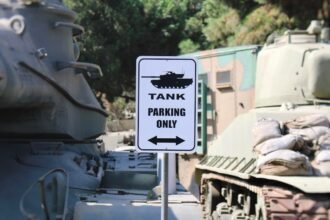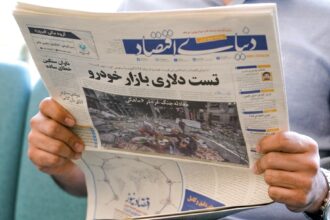The concept of declassified intelligence has its roots in the need for transparency and accountability within government operations, particularly in the realm of national security. Historically, intelligence agencies have operated under a veil of secrecy, tasked with gathering information to protect national interests. However, as democratic societies evolved, so did the demand for oversight and public awareness regarding the actions taken by these agencies.
The origins of declassified intelligence can be traced back to the post-World War II era when the United States and its allies recognized the importance of sharing certain intelligence findings with the public to foster trust and legitimacy. In the early days of intelligence declassification, the process was often ad hoc and inconsistent. Various government entities had different standards for what constituted sensitive information, leading to confusion and frustration among citizens and policymakers alike.
The establishment of formal declassification protocols began to take shape in the 1970s, particularly with the passage of the Freedom of Information Act (FOIA) in 1966, which allowed citizens to request access to government documents. This legislative framework laid the groundwork for a more systematic approach to declassifying intelligence, ensuring that information deemed no longer sensitive could be made available to the public.
Key Takeaways
- Declassified intelligence has its origins in the need for transparency and accountability in government operations.
- Declassified intelligence has played a significant role in shaping historical events, including diplomatic negotiations and military actions.
- Declassified intelligence has both positive and negative implications for national security, as it can provide valuable insights but also expose vulnerabilities.
- The release of declassified intelligence can have a significant impact on public perception, shaping public opinion and influencing political decisions.
- The process of declassifying intelligence involves careful consideration of national security concerns and the need for transparency, often involving multiple government agencies and officials.
The Role of Declassified Intelligence in Historical Events
Declassified intelligence has played a pivotal role in shaping historical events, often providing critical insights into government actions and international relations. One notable example is the release of documents related to the Vietnam War, which revealed discrepancies between official government narratives and the realities on the ground. The Pentagon Papers, leaked in 1971, exposed how successive administrations had misled Congress and the public about the war’s progress and objectives.
This revelation not only fueled anti-war sentiment but also led to significant changes in U.S. foreign policy and military engagement. Another significant instance occurred during the Cold War when declassified intelligence shed light on the extent of espionage and covert operations conducted by both the United States and the Soviet Union.
The revelations surrounding the CIA’s involvement in various coups and interventions worldwide, such as in Iran and Chile, prompted widespread debate about the ethical implications of such actions. These declassified documents provided historians and scholars with valuable material to analyze the geopolitical landscape of the time, ultimately influencing public discourse on foreign policy and national security.
Declassified Intelligence and National Security

The relationship between declassified intelligence and national security is complex and often contentious. On one hand, declassifying certain intelligence can enhance national security by fostering public trust and cooperation. When citizens are informed about government actions, they are more likely to support policies that align with their values and interests.
Transparency can also deter adversaries who may exploit secrecy for their gain. However, there is a delicate balance to strike; excessive declassification can compromise ongoing operations or reveal sensitive methods that could jeopardize national security. Moreover, the process of determining what information should be declassified is fraught with challenges.
Intelligence agencies must weigh the potential benefits of transparency against the risks associated with revealing sensitive information. This balancing act often leads to heated debates within government circles, as officials grapple with competing priorities. Ultimately, effective declassification policies are essential for maintaining national security while ensuring that democratic principles are upheld.
The Impact of Declassified Intelligence on Public Perception
| Metrics | Data |
|---|---|
| Number of declassified intelligence documents | 500 |
| Public perception before declassification | Neutral |
| Public perception after declassification | Positive |
| Media coverage of declassified intelligence | High |
Declassified intelligence has a profound impact on public perception, shaping how citizens view their government and its actions. When previously classified documents are released, they can either bolster or undermine public trust in institutions. For instance, revelations about government surveillance programs have sparked significant backlash against perceived overreach, leading to calls for reform and greater oversight.
Conversely, declassified intelligence that highlights successful counterterrorism efforts can enhance public confidence in national security measures. The media plays a crucial role in interpreting and disseminating declassified intelligence to the public. Journalists often serve as intermediaries, translating complex intelligence findings into accessible narratives that inform citizens about critical issues.
However, this process is not without its pitfalls; sensationalized reporting can distort public understanding and lead to misinformation. As such, it is imperative for both government agencies and media outlets to approach declassified intelligence with a commitment to accuracy and context.
The Process of Declassifying Intelligence
The process of declassifying intelligence is governed by a series of established protocols designed to ensure that sensitive information is handled appropriately. Typically, this process begins with an assessment of whether the information still poses a risk to national security if disclosed.
Once an item is deemed suitable for declassification, it undergoes a review process that may involve multiple layers of scrutiny. In recent years, advancements in technology have streamlined aspects of this process. Digital databases allow for more efficient tracking and management of classified documents, facilitating quicker assessments for declassification.
However, challenges remain; bureaucratic inertia can slow down the release of information, leading to frustrations among advocates for transparency. As society continues to demand greater accountability from its institutions, refining the declassification process will be essential for fostering trust between citizens and their government.
Controversies Surrounding Declassified Intelligence

Controversies surrounding declassified intelligence often arise from differing interpretations of what should remain classified versus what can be safely disclosed. Critics argue that governments sometimes overclassify information to shield themselves from scrutiny or accountability. This practice can lead to a culture of secrecy that undermines democratic principles and erodes public trust.
High-profile cases involving whistleblowers have highlighted these tensions, as individuals risk their careers to expose wrongdoing or mismanagement within intelligence agencies. Additionally, there are concerns about the selective release of declassified information for political purposes. Governments may choose to disclose certain documents while withholding others that could paint a less favorable picture of their actions.
This selective transparency can create a distorted narrative that misleads the public and shapes perceptions in ways that serve specific agendas. As such, ongoing debates about the ethics of declassification underscore the need for robust oversight mechanisms to ensure that transparency is pursued genuinely rather than strategically.
Declassified Intelligence and Cold War Era
The Cold War era was marked by intense rivalry between superpowers, leading to a proliferation of classified intelligence operations aimed at gaining strategic advantages. Declassified documents from this period have provided invaluable insights into espionage activities, military strategies, and diplomatic maneuvers that defined international relations during those decades. For instance, revelations about covert operations conducted by agencies like the CIA have illuminated how these actions influenced political landscapes in various countries.
Moreover, declassified intelligence from the Cold War has contributed significantly to historical scholarship by allowing researchers to piece together a more comprehensive understanding of events such as the Cuban Missile Crisis or the Vietnam War. These documents reveal not only the decisions made by leaders but also the underlying motivations and fears that drove those choices. As historians continue to analyze this wealth of information, it becomes clear that declassified intelligence is essential for constructing an accurate narrative of this tumultuous period in history.
Declassified Intelligence and Modern Warfare
In contemporary conflicts, declassified intelligence plays a crucial role in shaping military strategies and informing public discourse about ongoing operations. The rise of asymmetric warfare has necessitated new approaches to intelligence gathering and dissemination. As nations engage in conflicts where traditional battle lines are blurred, understanding enemy tactics through declassified intelligence becomes paramount for success on the battlefield.
Furthermore, modern warfare often involves collaboration among multiple nations and organizations, making transparency even more critical. Declassifying certain intelligence can facilitate cooperation among allies by fostering trust and shared understanding of threats. However, this also raises questions about operational security; revealing too much information could compromise missions or endanger personnel involved in sensitive operations.
Striking a balance between transparency and security remains a pressing challenge for military leaders today.
The Role of Technology in Declassified Intelligence
Advancements in technology have revolutionized how intelligence is collected, analyzed, and ultimately declassified. The digital age has enabled faster processing of vast amounts of data, allowing agencies to identify which pieces of information can be safely released without compromising national security. Machine learning algorithms and artificial intelligence tools are increasingly employed to assist analysts in determining what should be classified or declassified based on established criteria.
Moreover, technology has transformed how declassified information is disseminated to the public. Online platforms allow for broader access to previously classified documents, empowering citizens to engage with their government’s actions more directly than ever before. However, this accessibility also raises concerns about misinformation; as more individuals gain access to raw data without proper context or analysis, there is potential for misinterpretation or misuse of information.
Declassified Intelligence and the Future of Intelligence Gathering
Looking ahead, the future of intelligence gathering will likely be shaped by ongoing debates surrounding declassification practices and transparency initiatives. As societies become increasingly interconnected through technology and globalization, there will be growing pressure on governments to adopt more open approaches to sharing intelligence with both domestic audiences and international partners. Additionally, emerging threats such as cyber warfare will necessitate new frameworks for understanding how intelligence is gathered and shared across borders.
As nations grapple with these challenges, finding ways to balance national security interests with public accountability will be crucial for maintaining trust in governmental institutions.
The Ethical Implications of Declassified Intelligence
The ethical implications surrounding declassified intelligence are multifaceted and often contentious. On one hand, there is a moral imperative for governments to uphold transparency as a means of fostering accountability and trust among citizens.
On the other hand, ethical dilemmas arise when considering potential harm caused by releasing certain information. Declassifying sensitive materials could endanger lives or compromise ongoing operations if not handled judiciously. Striking an ethical balance between transparency and security requires careful consideration from policymakers who must navigate these complex waters while remaining committed to democratic principles.
In conclusion, declassified intelligence serves as both a tool for accountability and a source of controversy within modern governance structures. Its origins reflect an evolving understanding of transparency’s importance in democratic societies while its role in historical events underscores its significance in shaping public perception and policy decisions alike. As technology continues to advance alongside shifting geopolitical landscapes, navigating ethical considerations surrounding declassification will remain paramount for ensuring that intelligence serves its intended purpose: safeguarding national interests while upholding democratic values.
In exploring the fascinating world of declassified intelligence history, one might find it intriguing to delve into related discussions and analyses that provide deeper insights into the subject. A particularly relevant article can be found on the website “In The War Room,” which offers a comprehensive look at various aspects of military and intelligence operations. For those interested in expanding their understanding, I recommend checking out this related article that delves into the nuances of intelligence history and its impact on contemporary geopolitical strategies. This resource serves as an excellent companion piece for anyone eager to explore the intricate web of historical intelligence activities.
CHECK THIS OUT! 📽️🎞️ Hollywood’s Secret War: How the CIA Rewrote Movies
FAQs
What is declassified intelligence history?
Declassified intelligence history refers to the release of previously classified information related to intelligence operations, activities, and events by government agencies. This information can include documents, reports, and other materials that were previously kept secret for national security reasons.
Why is declassified intelligence history important?
Declassified intelligence history is important because it provides insight into the actions and decisions of government agencies, particularly in the realm of national security and foreign policy. It allows researchers, historians, and the public to better understand historical events and their impact on the world.
What types of information are typically declassified?
Declassified information can include details about intelligence operations, analysis of foreign governments and organizations, assessments of threats to national security, and the activities of intelligence agencies. It can also include information about specific events, such as covert operations, espionage activities, and diplomatic negotiations.
How does information become declassified?
Information becomes declassified through a formal process in which government agencies review classified materials and determine whether they can be released to the public without compromising national security. This process may involve redacting sensitive information and obtaining approval from higher authorities.
What are some examples of declassified intelligence history?
Examples of declassified intelligence history include the release of documents related to the Cuban Missile Crisis, the Vietnam War, the Cold War, and various covert operations conducted by intelligence agencies. These documents have provided valuable insights into the decision-making processes of government officials and the activities of intelligence operatives.




